#Rokuonji
Photo
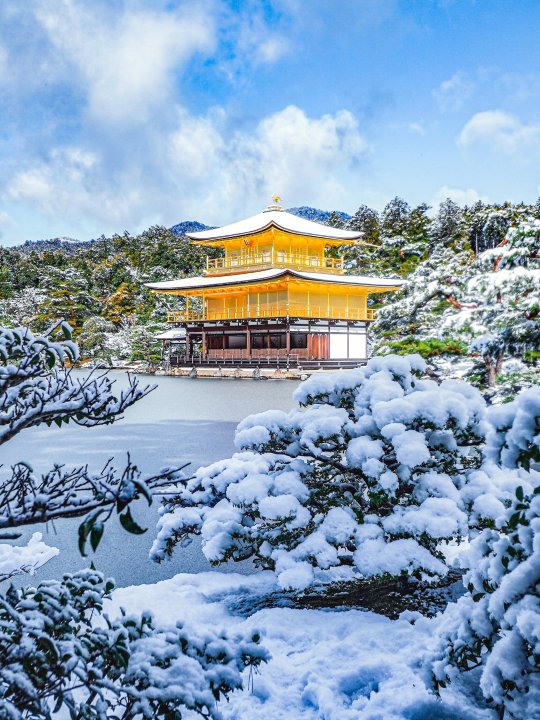
Kinkaku-ji, Kyoto, Japan | Bird
#Japan#Kinkaku-ji#Temple of The Golden Pavillion#金閣寺#Rokuon-ji#Deer Garden Temple#金閣鹿苑寺#Kyoto#Kinkakuji#Rokuonji#Zen Buddhism#Buddhist Temple#Winter#Nippon
42 notes
·
View notes
Photo
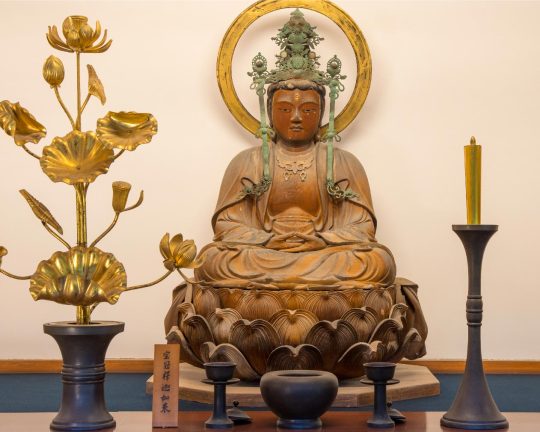
A sculpted image of Shaka Nyorai (釈迦如来) i.e. the historical Buddha Shakyamuni crowned as a prince enshrined within the golden pavilion of Kinkakuji Temple (金閣寺) in Kyoto
Image from the temple’s official website
#japanese art#buddhist art#釈迦如来#shaka nyorai#shakyamuni#京都#kyoto#金閣寺#kinkakuji#鹿苑寺#rokuonji#臨済宗#rinzai#zen buddhism#宝冠釈迦如来#hokan shaka nyorai
32 notes
·
View notes
Text

#金閣寺#鹿苑寺#rokuonji#goldenpavilion#京都#kyoto#京都散策#minolta125rivazoom#fujifilm#fujixtra400#pei3yangfilm#pei3yanggoesto🇯🇵#minolta#ishootfujifilm#filmlife#filmphotography#フィルム#フィルム写真#フィルム写真普及委員会#フィルムに恋してる#生活とフィルム#explorejpn#ishootfilm#filmisnotdead#filmcommunity#analogphotography#京都観光#japan#japan travel
3 notes
·
View notes
Text



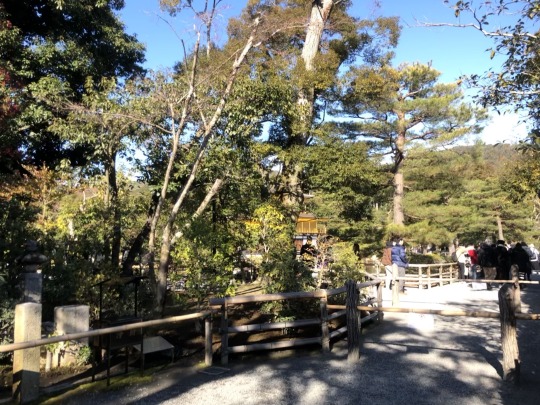



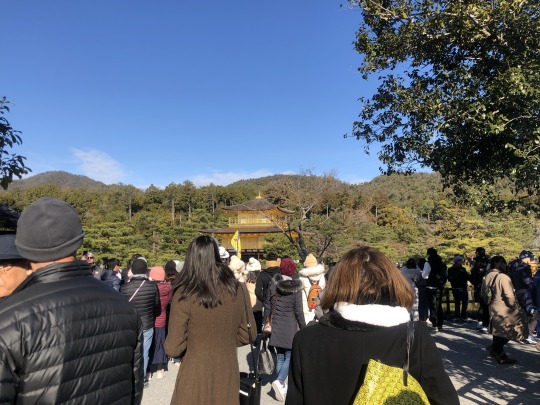




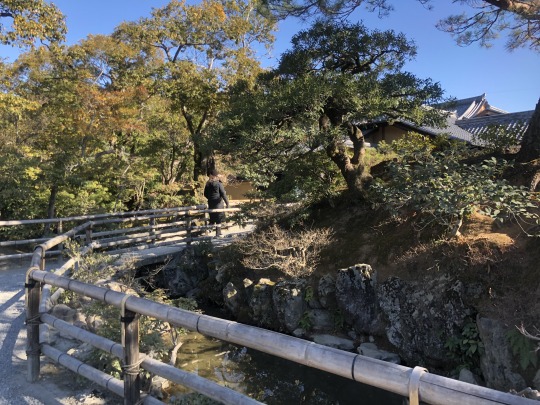
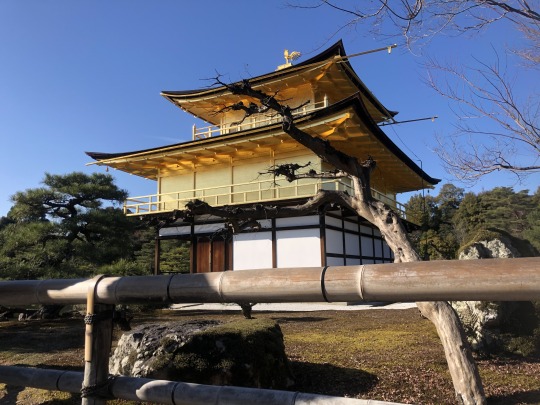
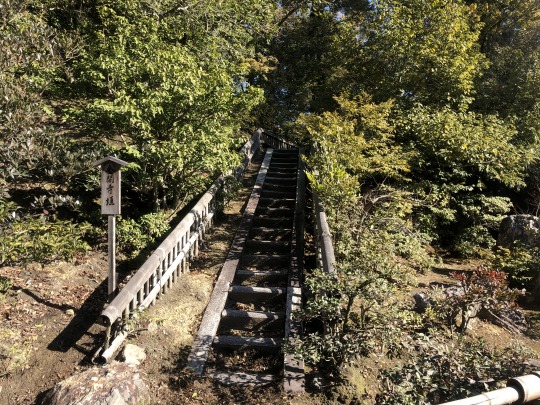






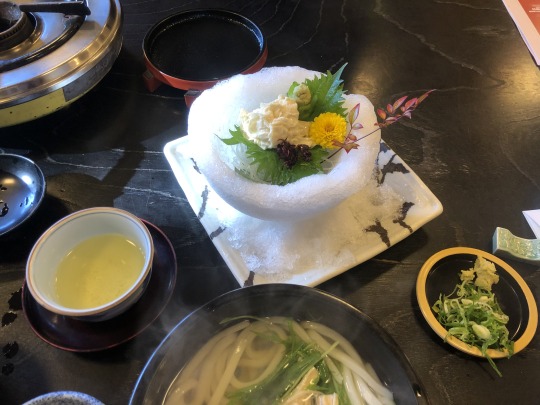
osaka & kyoto pt. 1 (12.22-12.23.25)
#osaka#kyoto#kuhang abo#did a lot of walking#also got to find a lot of stuff to eat surprisingly!#kinkakuji#rokuonji#first two days i kept getting dizzy/nauseous because of motion sickness ajsissjjsjddi#and i was worried because i couldn’t really breathe well with a mask#but everyone else had like no mask but kept coughing#thankfully the tour guide for the kyoto trip helped us get i medicine for motion sickness :’0#and it helped a lot#i still feel bouts of nausea up til now tho but it’s less severe than before
1 note
·
View note
Photo

The #goldenpavilionkyoto (金閣寺 - #Kinkakuji or officially: 鹿苑寺 - #Rokuonji) with #clouds carrying #snow ❄️ (at Rokuon-Ji Temple (Golden Pavilion)) https://www.instagram.com/p/CpFb34KvjJ5/?igshid=NGJjMDIxMWI=
0 notes
Photo

Kinkakuji, the Golden Pavilion ia a Zen temple found in northern Kyoto, Japan. Formerly known as Rokuonji, the place was the retirement villa of the shogun Ashikaga Yoshimitsu in the early 15th century. #kinkakujitemple #goldentemple #kyoto #japan #rokuonji (at 金閣寺 Kinkakuji Temple) https://www.instagram.com/p/CpAAeuAv8iR/?igshid=NGJjMDIxMWI=
0 notes
Text

白実南天[Shirominanten]
Nandina domestica 'Shironanten'
白[Shiro] : White
実[Mi] : Fruit, berry, nut
南天[Nanten] : Nandina domestica
Also known as 白南天[Shironanten|Hakunanten] or 白実の南天[Shirominonanten].
This is one of the ones growing in my garden. The typical nanten, which produces red berries, has leaves that turn red in autumn, and this variety seems to be evergreen, but this one has red edges on the leaves. And, Hiyodori(brown-eared bulbuls) often come to this, swaying branches and making high-pitched calls.
It is considered a tree of good luck and is often used as a garden tree, and it is said that a good place to plant it is in 鬼門[Kimon](the gate of oni, or the northeast direction) of the house. An extremely thick nanten tree is used in the tea ceremony room on the grounds of Rokuonji Temple.
https://en.wikipedia.org/wiki/Oni#Demon_gate
20 notes
·
View notes
Text
English Cast Announced for the Remake Our Life! Anime
English Cast Announced for the Remake Our Life! Anime
The English cast has been announced for the Remake Our Life! anime:
Jerry Jewell is Kyoya Hashiba
Lindsay Seidel is Aki Shino
Macy Anne Johnson is Nanako Kogure
Marisa Duran is Eiko Kawasegawa
Kamen Casey is Tsurayuki Rokuonji
Emily Fajardo is Miyoko Hashiba
Jordan Dash Cruz is Genkiro Hikawa
Caitlin Glass is Misaki Kano
Additional voices include:
Dusty Feeney
Jennifer Alyx
Kelsey…
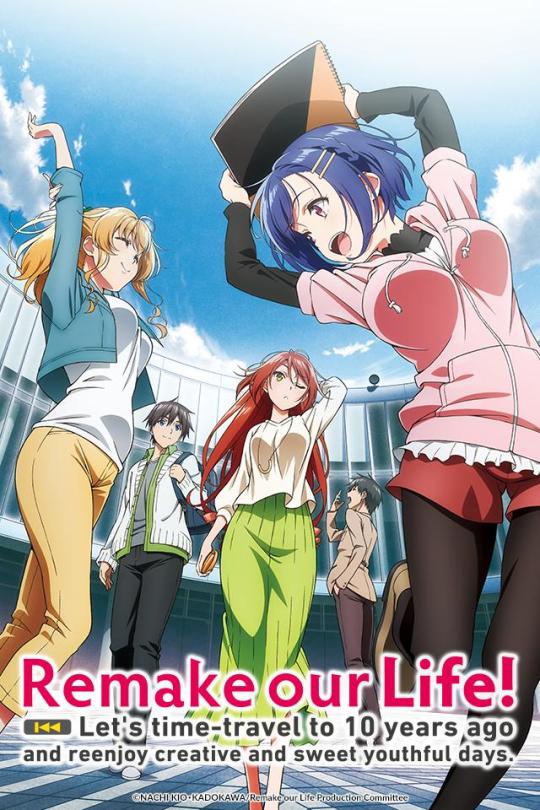
View On WordPress
2 notes
·
View notes
Photo

銀閣寺
京都の名所
銀閣寺(ぎんかくじ)は、京都市の東部、哲学の道周辺に位置する仏教寺院です。公式名称は「慈照寺(じしょうじ)」ですが、一般的には銀閣寺として知られています。
銀閣寺は、応仁の乱後に建立されましたが、初代将軍である足利義満の意向により、彼の死後にその別荘地とし���機能することになりました。義満は金閣寺(鹿苑寺)を建立しましたが、その弟子である応仁の乱の後、孫の足利義政が銀閣寺を建立しました。
銀閣寺の名前は、金箔で装飾された金閣寺とは異なり、元々は銀箔で装飾する予定でしたが、完成に至らず銀閣のままとなりました。そのため、「銀閣寺」と呼ばれるようになりました。
寺院の中心的な建築物は「銀閣」または「宝山楼」と呼ばれる、二階建ての建物です。上層に銀色の塗装が施されておらず、質素な外観を持っています。この建物は、美しい庭園と共に、周囲の景色と調和した風景を提供しています。
銀閣寺周辺には、哲学の道や慈照寺の庭園など、散策するのに適した美しい景観が広がっています。特に紅葉の時期には多くの観光客が訪れ、その風景の美しさが称賛されています。
♪♫♬🎤🎹🎶♪♫♬🎤🎹🎶♪♫♬🎤🎹🎶♪♫♬🎤🎹🎶
Ginkakuji Temple
famous places in kyoto
Ginkakuji is a Buddhist temple located in the eastern part of Kyoto City, around Tetsugaku no Michi. The official name is Jishoji, but it is generally known as Ginkakuji.
Ginkaku-ji Temple was built after the Onin War, but according to the wishes of Yoshimitsu Ashikaga, the first shogun, it became a villa after his death. Yoshimitsu built Kinkakuji (Rokuonji), but after the Onin War, his grandson Yoshimasa Ashikaga built Ginkakuji.
Unlike Kinkaku-ji, which was decorated with gold leaf, Ginkaku-ji's name was originally planned to be decorated with silver leaf, but it was not completed and the name remained as Ginkaku-ji. Therefore, it came to be called "Ginkaku-ji".
The main structure of the temple is a two-story building called ``Ginkaku'' or ``Hozanro.'' There is no silver coating on the upper layer, giving it a simple appearance. The building, along with a beautiful garden, offers a landscape in harmony with the surrounding landscape.
The area around Ginkaku-ji Temple is full of beautiful scenery that is perfect for strolling around, such as the Philosopher's Path and the gardens of Jisho-ji Temple. Many tourists visit especially during the autumn leaves season, and the beauty of the scenery is praised.
0 notes
Text
History of Kyoto
On October 22, 794 (Enryaku 13), Emperor Kanmu left Nagaokakyo, where he had lived for 10 years (currently Muko City, Nagaokakyo City, Kyoto Prefecture, etc.), and moved to a new capital under construction in the center of the basin to the northeast. It has entered. Rectangular, measuring about 4.5 kilometers from east to west and about 5.2 kilometers from north to south, it housed government offices (Daidairi), and the emperor's residence (Dairi) in the center. From there, Suzaku-oji (now Senbon-dori) ran straight through to Rajomon, the gateway to the south. was designated as "Heiankyo". Until then, the capital had only lived for ten to several decades at most, but Heian-kyo and its successor, Kyoto, continued to be the capital of Japan for over a thousand years. A city that has maintained its position as the center of a single civilization for such a long period of time is rare in the world. It must be said that Kyoto is Japan's "eternal capital".
The city was built in a planned manner, like Gobanme, but Ukyo was very wet and difficult for people to live in, so people moved to Sakyo. Therefore, the development of the eastern part of Kyoto progressed.
During the Heian period, the aristocrats known as the Fujiwara clan wielded great power. They married their daughters to the emperor and became relatives of the emperor. The Fujiwara clan rose to the position of 'regent' or 'chief adviser' to help the emperor in the administration of politics, and expanded their power.
At the end of the Heian period, samurai became more powerful than nobles, and the Taira clan grew in power. It had the greatest power in the era of Taira no Kiyomori, but after Kiyomori died, the Taira clan was defeated by the Genji clan, and Minamoto no Yoritomo opened the Kamakura shogunate.
After surviving the Jisho-Juei Civil War, commonly known as the "Genpei War", we will enter the era of a full-fledged samurai government. Even though the Kamakura shogunate was established in the eastern part of Japan, the Kyoto Imperial Court still held power, and Kyoto was the largest mega-city in Japan. Even in the Kamakura period, Kyoto never lost its importance.
After the Kamakura shogunate was destroyed by Takauji Ashikaga, the Muromachi shogunate was established and the shogun established the shogunate in Kyoto.
The Kinkaku-ji temple, which was built in this period, represents the gorgeous Kitayama culture, while the Ginkaku-ji temple represents the simple and tasteful Higashiyama culture.
Kyoto regained its position as Japan's sole political center. Purely Japanese culture flourished in Kyoto, such as the Kitayama culture led by the 3rd shogun Ashikaga Yoshimitsu, and the Higashiyama culture led by the 8th shogun Yoshimasa. Yoshimitsu's residence, Kitayamaden, and Yoshimasa's villa, Higashiyamaden, were later converted into temples. This is Rokuonji and Jishoji, commonly known as "Kinkakuji" or "Ginkakuji".
In addition, the city of Kyoto was divided into Kamigyo and Shimogyo. In Kamigyo, there was the Imperial Palace (the residence of the emperor) and the shogunate, and in Shimogyo, the city was built mainly by commerce and industry (people who do business and make things).
In the first year of Onin (1467), the Onin War broke out as a result of the battle between the Shoguns of the Muromachi Shogunate. This was a big battle that turned most of Kyoto into a burnt wasteland and lasted for 11 years.
As the power of the Muromachi shogunate weakened, Japan entered the turbulent times of the long Sengoku period. Politically, the Sengoku daimyo (feudal lords of the Sengoku period) were in power in various places during this period, but the culture of Kyoto was still the object of their admiration. The fact that Takeda Shingen, who was based in Kai and was a prominent figure in the eastern part of Japan, took the trouble to invite only his wife from an aristocratic family in Kyoto, which is the most obvious example of this. Nobunaga Oda, who aimed to unify the world, first aimed at Kyoto because he ruled Kyoto, which led to the rule of the world.
After Nobunaga Oda committed suicide after being betrayed by Mitsuhide Akechi, Hideyoshi Toyotomi unified the world.
Hideyoshi built Fushimi Castle and a magnificent building called 'Jurakudai' covered with gold leaf.
With the establishment of the Edo Shogunate by Ieyasu Tokugawa, Kyoto lost its position as the center of politics. But even so, Kyoto remained the cultural and industrial center of the nation. In particular, high-class products such as Nishijin textiles were produced one after another from Kyoto's industries, and were shipped all over the country. Along with Edo, the political capital, and Osaka, the commercial capital, Kyoto was known as one of the “Three Capitals” and continued to prosper. At that time, it is said that Edo grew into a metropolis with a population of 1 million, Osaka with a population of 500,000, and Kyoto with a population of 400,000. The next largest cities were Nagoya and Kanazawa, where over 100,000 people lived, and even the castle towns of large feudal domains had populations of tens of thousands. I was doing it.
However, at the end of the Edo period (the end of the Edo Shogunate), the Sabaku faction (those who wanted to protect the Shogunate) and the Sonno faction (those who aimed for emperor-centered politics) were in conflict.
For a long period of 300 years, early-modern Japan was peacefully governed, but the system of the Edo shogunate collapsed due to pressure from the Western powers. National opinion is completely divided into two over whether to open the country or to expel foreigners (the idea of excluding foreigners). In the midst of this, the great foreign domains such as Choshu and Satsuma, which had increased their degree of independence, and the shogunate itself, whose foundations were beginning to wobble, increased their power by assuming the traditional authority of the emperor of Kyoto. You will be able to maintain it. As a result, Kyoto was once again reinstated as a political city. In the last few years of the Tokugawa shogunate, the shogun often stayed in Kyoto, and the Tokugawa government even took on the appearance of the 'Kyoto shogunate'. The feudal domains that were in conflict with the shogunate also used Kyoto as the stage for various political maneuvers. Ryoma Sakamoto of Tosa, Kogoro Katsura (later Takayoshi Kido) of Choshu, Takamori Saigo of Satsuma, and the Shinsengumi, who were determined to protect the shogunate, were active around this time.
In 1867, the shogunate returned the right to govern the country to the Imperial Court (this is called Taisei Hokan).
The new government army and the former shogunate army fought fiercely in Toba and Fushimi, Kyoto, and the new government army won, and in 1869, the capital of Japan was moved from Kyoto to Tokyo. People worried that the city of Kyoto would become lonely proceeded with modernization one after another in order to restore vitality.
One example is the construction of a canal to draw water from Lake Biwa to Kyoto. 21-year-old Sakuro Tanabe overcame many difficulties to make it a reality. Thanks to this, abundant water was brought in, hydroelectric power generation became possible, and Japan's first streetcar was realized.
Before long, the Edo Shogunate was overthrown, and the Meiji Restoration government, centered on the emperor, was born. It seemed that Kyoto would return to being the “capital” again. However, Emperor Meiji changed Edo to "Tokyo" and moved there. In effect, the transfer of the capital to Tokyo took place. Kyoto was hit hard by this, and it is said that the population, which numbered over 300,000, dropped to over 200,000.
However, Kyoto repelled this crisis admirably. Under strong leaders such as Masanao Makimura, the second governor, and Kunimichi Kitagaki, the third governor, Japan's first elementary school was established, the Kyoto Exposition was held, and Lake Biwa was established. Kyoto was one of the first cities in Japan to carry out new attempts one after another, such as the construction of the canal, the accompanying hydroelectric power generation, the operation of streetcars, and the construction of modern buildings made of red bricks. As a result, Kyoto has been reborn as a splendid modern city, giving off a new brilliance as one of Japan's leading cities.
During the Pacific War (World War II), Kyoto hardly survived the air raids, and as a result, many of the precious cultural assets were left unharmed at the end of the war. Kyoto currently has a population of approximately 1.47 million. It is the 8th largest city in Japan (2015 population census), and is a city that symbolizes traditional Japanese culture.
0 notes
Text
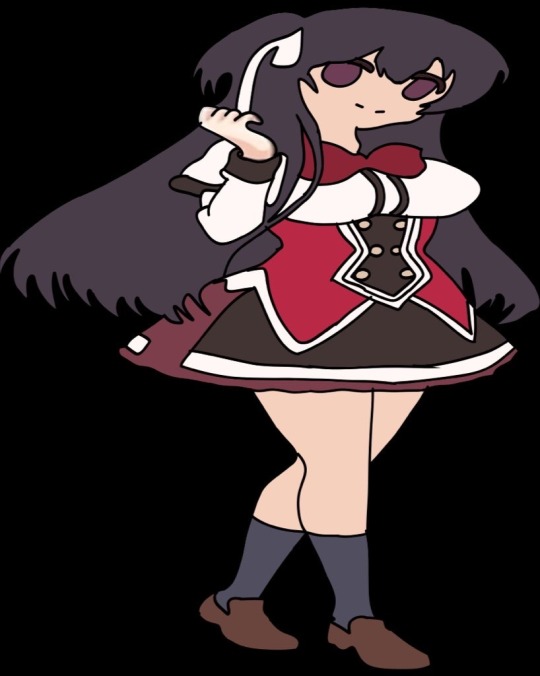
Rokuonji Kaoruko
1 note
·
View note
Text
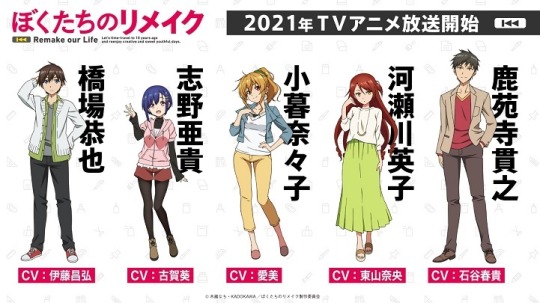
Bokutachi no Remake ぼくたちのリメイク
Plot: Life is not going well for 28-year-old Kyouya Hashiba. Having left his office job to pursue a career in the video game industry, his internship at a popular game studio abruptly ends, leaving him unemployed and forcing him to move back in with his parents. Additionally, his jealousy toward the success of the "Platinum Generation"—a group of similarly-aged creators—has caused him to regret his decision to attend a traditional university instead of an arts college. Even though he believes there are no second chances in life, Kyouya is suddenly given one when he wakes up one day and finds himself 10 years in the past.
Instead of choosing business school like he originally had, Kyouya decides to pursue his passions and attends the Oonaka University of Art. There, he meets classmate Eiko Kawasegawa, the woman who had hired him as an intern in the present, alongside his new housemates and future Platinum Generation members: underachieving artist Aki Shino, aspiring singer and actress Nanako Kogure, and naturally-gifted writer Tsurayuki Rokuonji.
With each project they complete together, Kyouya and his friends venture closer to discovering their true potential as creators and remaking their lives into the ideal versions they desire. [Written by MAL Rewrite]
Episodes: 12
Main Characters:
Hashiba Kyouya
Shino Aki
Kogure Nanako
Rokuonji Tsurayuki
Kawasegawa Eiko
Points: 6,5/10 [6,5625]
Once again someone goes back into the past to do something he wanted to do, but couldn’t or just didn’t do because it didn’t seem to be a logical decision at that time. Either way, for some reason or another (thanks for that, story writer), Kyouya is suddenly thrown into the past. Yes, he wakes up and whoops, his desired art university acceptance letter has arrived. This time around he takes the chance to reach what he truly desires: to create art.
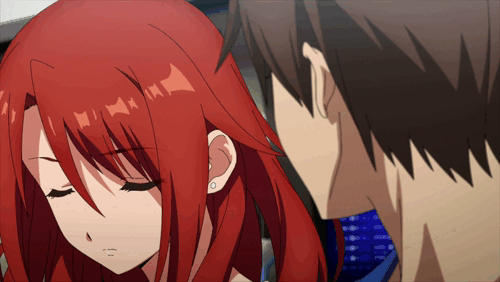
The premise reminded me of ReLife, which I enjoyed quite a bit. ReLife was more about human bonds, growing as a person and less about sudden love and weird time jumps that make absolutely no sense. Yes, I didn’t really enjoy Bokutachi no Remake much, it honestly started to make less sense with each episode being aired. It’s not even half as profound and deep as ReLife, it really just conveys one message: live your dreams, try whatever you want to try, even if it may seem illogical. You only have one life, live it to the fullest.
And here Kyouya desired to be an artist rather than a simple office worker. Like Kyouya, the characters are the dore, the entire drive of the story and honestly, there is not much to say. The main character honestly doesn’t receive much development since he’s constantly busy with holding all 4 of his friends together who are a bunch of very different individuals. The development is also cut insanely short, because suddenly the anime adapts a perspective of a different future where all 4 are mostly separated and we have not even a single clue what happened in the meantime. While the idea is interesting, I can’t fathom why the anime took this approach.
Neither did the love triangle impact me at all. Kyouya was always a big fan of Aki, in his future where she was an artist, and suddenly, kaboomski, she was in love with him, too. Who needs development and logic again? They may have worked well together and he was truly nice and motivative, but for them to be suddenly married was perhaps a step too much into the future…

Nanako on the other hand was left forgotten in the second part. Her story was perhaps the most interesting one, as she as a mediocre singer wanted to hit big, wanted to do her best. She was truly passionate and all we see of her is a short clip. But we don’t really get to see or hear her, in retrospect she only ended up as a tool for Kyouya to remember his past and to stand his ground. She was perhaps just an inspiration.
Same goes for Tsurayuki. When it started to get interesting, when real conflicts finally arrived, the time jump happened and everything was nowhere near resolved. Nonetheless the realism of the working world was well captured, perhaps even the highlight as we could watch a gaming company develop a game and a bunch of kids working in teams which always sparks a lot of chaos.

The anime suffers from not being continued right now, perhaps also from having no explanation for time jumps. My opinion might be swayed, if a second season comes around to show what happened before the time jump, to actually give us an insight on why all of this even happened in the first place.
If you like Waifus and Titties, you can give this anime a try, too. The fanservice is uncalled for and absolutely useless. This doesn’t make up for plot holes. Neither does the beach episode. It honestly made me question why time has to be wasted on nothing in particular. This could have been used for proper character development.
It’s overall a decent watch, but I wouldn’t exactly recommend it, even if you’re into slice-of-life.
Artwork/Design/Animation - 7
Story/Characters - 6,5
Enjoyment - 6,5
0 notes
Photo

“A Visit to Kinkakuji Temple” (金閣寺拝見) from the series “Customs and Manners of Yamato” (大和風俗) by Yōshū Chikanobu (楊洲周延) a.k.a. Toyohara Chikanobu (豊原周延), 1893
#japanese art#japanese prints#woodblock print#楊洲周延#yoshu chikanobu#toyohara chikanobu#京都#kyoto#金閣寺#kinkakuji#鹿苑寺#rokuonji#明治時代#明治#meiji period#meiji era
24 notes
·
View notes
Text

#金閣寺#鹿苑寺#rokuonji#goldenpavilion#京都#kyoto#京都散策#fujifilm#fujixtra400#pei3yangfilm#pei3yanggoesto🇯🇵#ishootfujifilm#フィルム#フィルム写真#フィルム写真普及委員会#フィルムに恋してる#生活とフィルム#filmphotography#ishootfilm#filmisnotdead#thefilmstead#filmphotographic#filmphoto#filmlife#日本旅行#京都旅行#minolta125rivazoom
3 notes
·
View notes
Video
An Evening at the Golden Pavillon by Patrick Vierthaler
Via Flickr:
(Shot with a LEE 100 Grad ND Soft 0.6 + C-PL)
#Kyoto#autumn#fall#foliage#Herbst#Herbstlaub#momiji#2021#Kinkakuji#Kinkaku#golden#pavillon#Rokuonji#金閣寺#鹿苑寺#京都#禅#禅寺#相国寺塔頭寺院#秋#晩秋#もみじ#紅葉#LEE#100#Grad#ND#soft#0.6#circular
3 notes
·
View notes
Photo

The Temple of the Golden Pavilion, Kyoto
359 notes
·
View notes